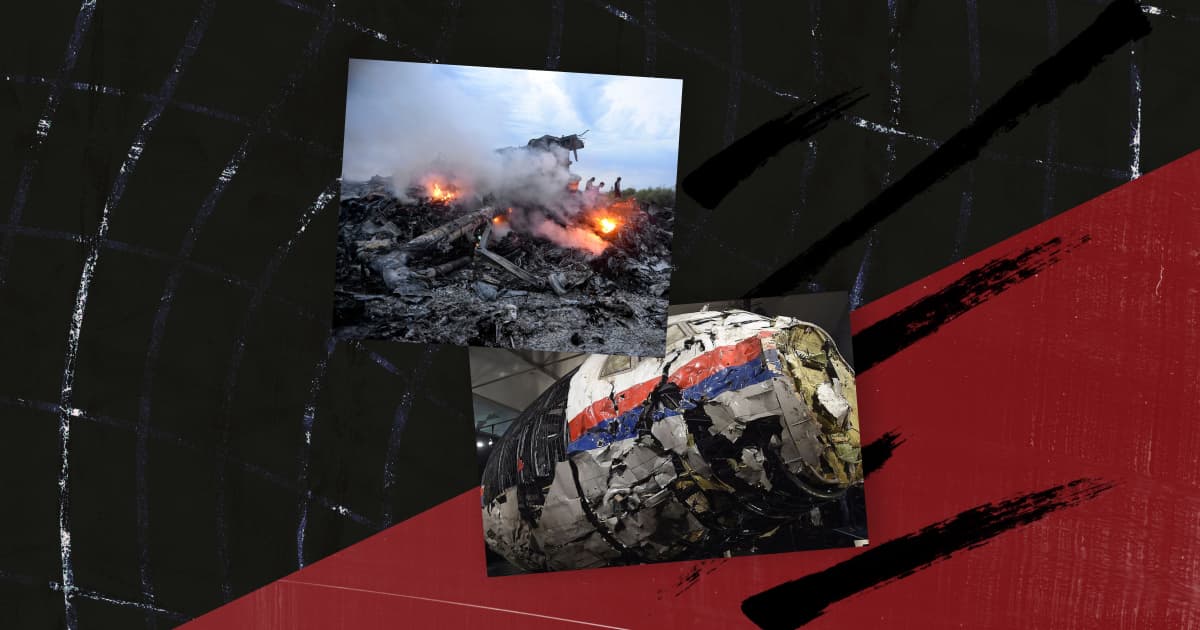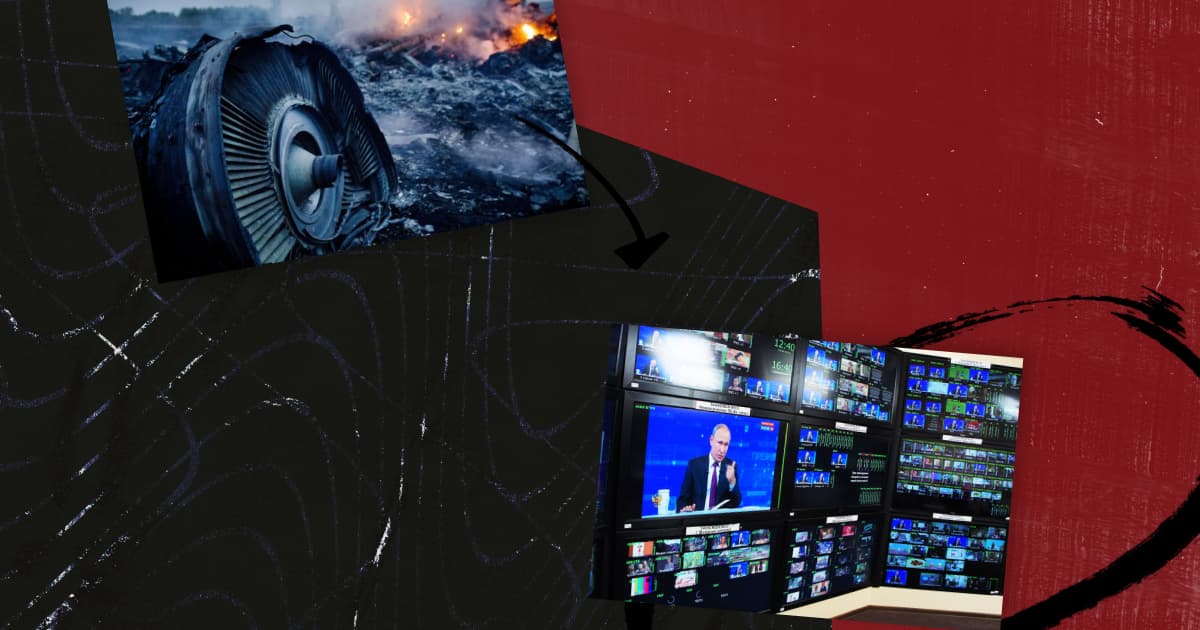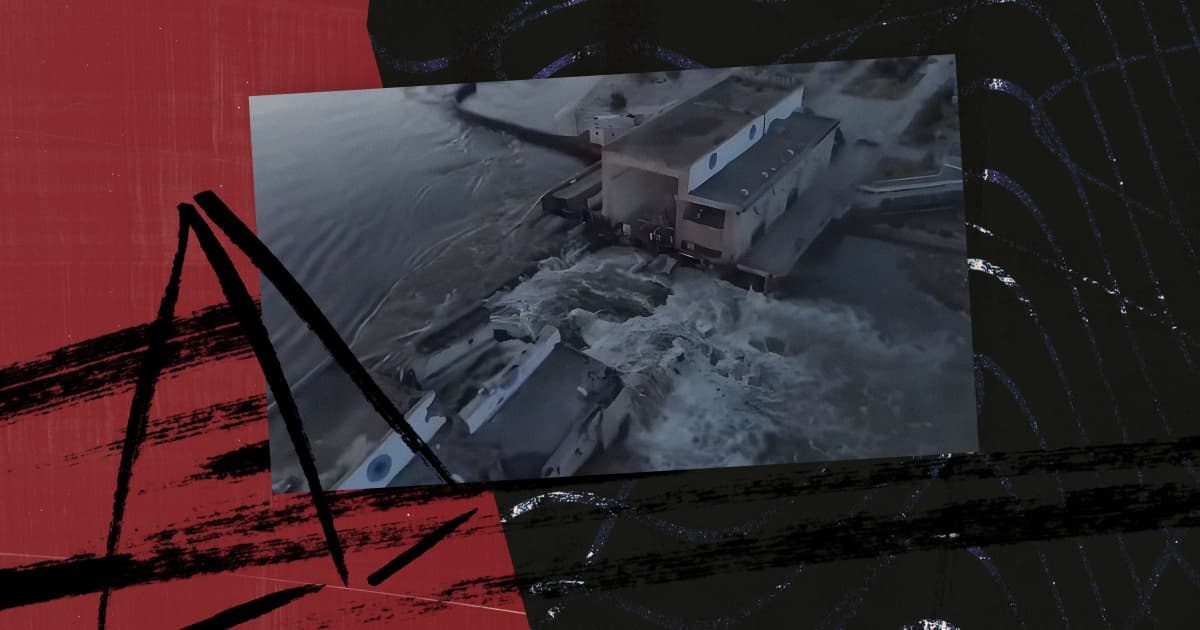Two Summer Days and Russian Propaganda: MH17 and the Kakhovka Hydroelectric Power Plant

Russian propaganda has been actively working since 2014, since the beginning of the Russian-Ukrainian war. It works not only for domestic consumers but also involves foreign media, which may not even be aware of it. How does it do it?
July 17, 2014
It was on this day that the militants of the illegal military formation "DPR" shot down the international passenger plane flight MH17 using a Russian Buk surface-to-air missile system. This was an accident: the perpetrators were sure they had shot down a Ukrainian An-26 transport aircraft.
Since the event was accidental, Russian propaganda was not prepared. But it had to react somehow. On the evening of July 17, the first propaganda version appeared. A secret source from what appeared to be Federal Air Transport Agency told Interfax that the Ukrainian military wanted to hit the plane carrying Putin but got it wrong and hit a passenger plane. What's the evidence? Well, MH17 and Putin's plane crossed paths in the air near Warsaw. Is it absurd? Of course, it is. However, there is no such statement on the Interfax website, neither as of now nor in the archive.

Russian propaganda, which reprinted this statement at the time, did not leave any hyperlinks to Interfax. So everyone knows it, but no one knows where it came from. This is the strategic goal of propaganda: to make the idea of something so widely known and accepted that it becomes a direct part of a person's worldview and is not subject to critical analysis.
Obviously, the plane with Putin could not have been flying over the territory of hostilities. This version was so absurd that the propaganda had to look for additional explanations. After all, on July 18, Putin blamed Ukraine, so propagandists had to come up with a specific mechanism of blame. This is how an endless chain reaction of information warfare emerged: every time new evidence of Russian involvement appeared, Russians came up with new versions.
With this in mind, researchers at the RAND Corp analytical centre called the Russian fight model for the information space "a firehose of falsehood." They highlighted its features:
- lack of commitment to consistency;
- lack of desire for objective reality;
- speed, continuity, repetitiveness;
- large quantity and use of many channels.
One of these channels is the so-called "foreign broadcasting." At the time, this function was performed by RT. These resources are used as a bridge between the foreign information field and Russian statements. Then they are copied by media with a low reputation, seeking a sensation. Then more prestigious media outlets respond.
For example, on July 18, the Financial Times published an article reviewing the evidence available in the case at the time. Although the preference is to blame the militants, their version of events is also given attention.
In other situations, prestigious publications may approach the authorities to get a refutation of a propaganda thesis that has been spread in the information space. The government officials refute it, but often this only draws additional attention to the propaganda statement. According to RAND researchers, in such a situation, propaganda has a more favourable position, as it has the effect of the first impression on its side.

Under such conditions, the propaganda thesis becomes a legitimate topic for discussion. The rules of freedom of speech and democratic debate apply to it. It is gaining more and more recognition. This can also be supported by the experts, real and fake, who discuss it.
The most extreme point of this phenomenon may be the use of propaganda in academic publications. For example, in 2018, the University of Manchester published a book by Dutch political scientist Kees van der Pijl, "Flight MH17, Ukraine and the New Cold War," in which he retells the Russian "version of events." The book contains all the classic elements of Russian propaganda: in 2014, the United States staged a coup d'état in Ukraine, after which fascists and oligarchs came to power, while Crimea simply returned to Russia. Van der Pijl hints that MH17 was also shot down by Ukrainians. This, he says, is a provocation to draw Russia into the civil war in Ukraine. The source of such thoughts? Retired Russian general Pyotr Deynekin. It seems that the publishers had no questions about such sources. According to the WorldCat bibliographic database, the book is still available in 1,050 libraries.
The paradox is that, most likely, neither Van der Pijl nor his publishers are agents of Russian influence. They sincerely believe that their work contributes to the fight against US imperialism or something like that.
According to RAND researchers, Russian propaganda also seeks to use its target audiences in Russian interests but without them realising that they are being used.
For example, in 2015, the Russian opposition newspaper Novaya Gazeta published a secret document they obtained from unidentified sources. It concerned the reasons for the downing of MH17 and was created by a representative of the Russian military-industrial complex, and therefore contained both true and false information. The journalists published the document because a representative of the Russian state admitted in it that the Buk missile system shot down the plane. Then, Russian propaganda still tried to stick to the "version" about the Ukrainian fighter jet. At the same time, the author of the document stated that the missile was fired from Ukrainian positions. Although this claim was later refuted, it created additional discrepancies in the case. This is exactly what Russian propaganda was seeking.
Let's go back to July 17, 2014. On that day, the Security Service of Ukraine published intercepted phone calls from the militants in which they admitted their involvement. Given the altitude of MH17, this could only have been done with a Buk or other more advanced surface-to-air missile system. All this was already known in July 2014. However, "impartiality" pushed the media to equally treat the positions of Ukraine, the militants, and Russia. This created a field of uncertainty, which the Kremlin successfully exploited by filling it with many contradictory theses.
June 6, 2023
On this day, the Russians destroyed the Kakhovka hydroelectric power plant dam.
Sometimes it seems that we are going round in circles, and that circle is in hell. Otherwise, it is difficult to understand why we have to face the same problems over and over again: the positions of Russia and Ukraine are considered equally. If the positions of these two countries were really equal, Ukraine would not have to constantly demand weapons from its partners. Moreover, we would never have been given such weapons, as it happened at the beginning of the Russian-Ukrainian war. However, Ukraine is fighting not only for its political survival.

This, of course, does not prevent foreign media from putting an equal sign between Kyiv's and Moscow's statements. This happens every day, but this time, the consequences could be disproportionately significant. The prerequisite for Russia's information campaign is now ripening — a field of uncertainty.
The second stage is now underway. The Kremlin seems to have decided on its main "theory" of events: Ukraine attacked the dam using rocket artillery. A "proof" has already been circulated: an interview with Major General Andrii Kovalchuk for The Washington Post, published in December 2022. In it, Kovalchuk explains that during the Kherson operation, he considered damaging the dam to complicate the logistics of the right-bank group of Russian troops. A test strike was carried out, but there was no need for further ones.
Now everyone is forced to respond to this "evidence." It arose because the Russians are simultaneously exploiting Ukraine's strengths and weaknesses: publicity and accountability. According to the Defence Intelligence of Ukraine, Russia has already allocated $6 million for the information regarding the Kakhovka HPP.
The fact that the Russians will use this version as the main one is evidenced by the "defrosting" of US propagandist Tucker Carlson. In April 2023, Fox News fired him after 14 years of cooperation. Over the years, Carlson has been telling a multi-million audience in the US that Russia should invade Ukraine. In May 2023, he announced that he would be producing his show on Twitter. It happened a month after leaving Fox News and was timed to coincide with the destruction of the dam.
At the same time, the third stage is underway: the creation of parallel versions. Strangely enough, democratisation plays into the Kremlin's hands here, but not political democratisation but rather socio-economic democratisation. Cheaper satellite technologies, the spread of open data processing skills, and the ability to independently publish the results of one's own analysis all introduce additional actors into the information space and make it more complex. The peculiarity of this situation is that the collection of open data is faster, so the results of the analysis are published almost instantly. In our case, many investigators argue that the dam did not collapse as a result of a deliberate explosion but due to spontaneous collapse and previous damage. The Russian opposition has been actively involved in promoting this theory.
Here again, Ukraine is forced to respond from a disadvantageous second position. That is why the reaction must be justified. It will take time to do this analytical effort. The representative of the Defence Intelligence of Ukraine, Andrii Yusov, announced this effort. And on June 8, researchers at the Norwegian Seismic Array concluded that an explosion had occurred at the dam on the night of June 6.
Has the MH17 downing taught us anything? It doesn't seem so if the investigation and court verdict this time again take eight years, which Russia will use to blur responsibility. Such an outcome would be a defeat for Ukraine, an insult to the families of those who died due to the dam's destruction, and a disappointing verdict for the foreign media.


